A sign of caring
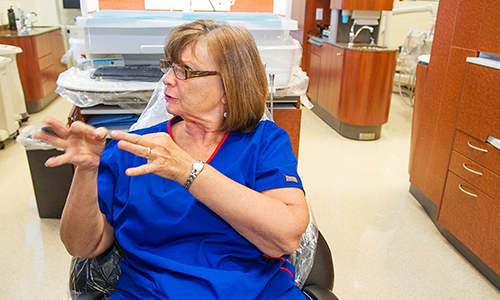
In high school, Chris Cramer experienced life on the outside when he visited a cafeteria as the only hearing person among a group of 150 young people at Texas School for the Deaf in Austin, Texas.
“I was the different one then,” he muses. “It was very eye opening, and it reversed things enough for me to say, ‘This is what they feel every day when they go out into the world.’”
Cramer, whose older brother Tony was born deaf, grew up using sign language to communicate. Now, as a fourth-year dental student, he is in a unique position to give back to a community that accepts him as one of its own.
“I always had this call to serve the deaf community,” Cramer says, “but I couldn’t really do that in mechanical engineering.”
His 13-year career as an engineer was exhilarating – international travel and management of people and projects – but Cramer eventually listened to that inner voice telling him to move from designing “things” to impacting people directly. He had considered medicine as a career option originally, and had watched with interest as a brother-in-law pursued dental education and a residency in orthodontics. Cramer took the plunge and enrolled in dental school. These days his hands do the treating – and the talking.
Feeling comfortable
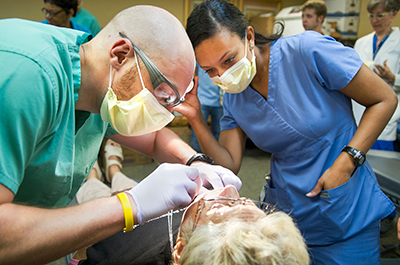 Linda Green of Dallas is no stranger to dental care, but 2012 marks the first time she can communicate with her dentist using sign language.
Linda Green of Dallas is no stranger to dental care, but 2012 marks the first time she can communicate with her dentist using sign language.
“I don’t want to lose you,” she tells Cramer at her first treatment appointment in late August, her hands talking with animated precision. “I think you are wonderful.”
A friend and former patient of Cramer’s had referred her to him, and she completed the new-patient screening process and was accepted for care at Texas A&M University Baylor College of Dentistry. She is Cramer’s fourth deaf patient.
Like many dentists and patients do at appointment time, the two make small talk about her part-time work in concessions for the Texas Rangers and as a cook at Dallas Cowboys Stadium. Green’s inside tip about the Cowboys owner: “Jerry Jones likes to eat meatballs,” she reveals with a sly grin; “Big meatballs.”
Communication has not always been this easy at dental appointments. Although eligible to request a certified sign language interpreter under the Americans with Disabilities Act, Green has resorted – like many deaf patients – to self-help methods in the past.
“Normally there is a lot of writing at appointments,” she says. “It can be confusing and hard to understand why we did what we did in the first place.
“I feel more comfortable here because there is better communication. It’s easier to understand what the dentist is doing because Chris can explain. There is still a little bit of having to figure things out but not like before.”
Wynell Rodriguez can relate. She and her husband, Juan, are deaf, and both connected with Cramer for dental care in 2011. When she first saw Cramer communicating fluently in sign language, she was ecstatic.
“Oh my goodness; I couldn’t believe it,” Wynell Rodriguez says of that first visit. “I was so thankful. I love that we were able to communicate with him directly. Chris is also funny, and he’s always laughing and smiling. I really appreciate him.”
Juan Rodriguez’s reaction was “That’s wonderful!” when told at the appointments desk that Cramer could sign. “It felt good that I could communicate using my first language.
“I went with Chris … then my wife came, then her friend came, we pulled in more people, and so on, and so on, and so on. I am very satisfied with Chris.”
Like-minded spirits
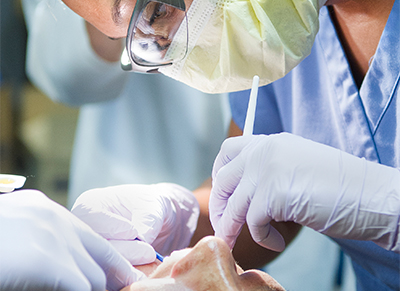 During his third year of dental school when he cared for three deaf patients, Cramer knew he wanted to do more. He sought out Leeanna Bartlett, assistant professor in public health sciences and director of social services. His idea was to reach out to a larger group of deaf patients with oral health education.
During his third year of dental school when he cared for three deaf patients, Cramer knew he wanted to do more. He sought out Leeanna Bartlett, assistant professor in public health sciences and director of social services. His idea was to reach out to a larger group of deaf patients with oral health education.
“All dental students have to do Tooth Talks; I wanted to arrange a Tooth Talk at a deaf school,” he explains.
Bartlett has a lengthy association with the deaf community and Dallas’ Deaf Action Center, particularly its senior citizens, through her 30 years of social service work at A&M Baylor College of Dentistry. She knew outreach there would be beneficial, so she set out to schedule an event.
And she just so happens to sign herself, although she says she’s gotten rusty from lack of practice. Her interest was spawned in the late 1980s when she observed a large number of deaf patients at the dental school.
“I was working here and would hear students say, ‘No one can communicate with this patient,’ and I thought that was sad,” Bartlett says. “It’s not a deaf person’s choice to be deaf.
“So I ended up taking five sign language courses at a local community college, two of which were for credit. I love the deaf culture and deaf population; it’s a unique community.”
Asked whether she eased into putting her newfound sign language skills to work back in the ’80s, Bartlett says no. “As soon as I started signing, students were grabbing me and saying ‘Help!’ It was really needed.”
The dental school has yet another deaf-patient ally on board. Connie Figueroa, patient advocate in the Office of Clinical Affairs, lends her sign language support to communicate with patients when needed.
High-volume service
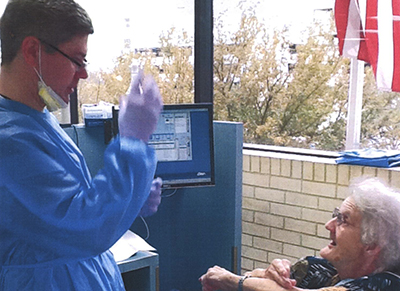 With Bartlett’s help, Cramer arranged an outreach event at Deaf Action Center in July 2012. Six additional dental students, one predental student and three TAMBCD clinical faculty members signed on to provide dental and oral cancer screenings, denture cleaning and fluoride treatments.
With Bartlett’s help, Cramer arranged an outreach event at Deaf Action Center in July 2012. Six additional dental students, one predental student and three TAMBCD clinical faculty members signed on to provide dental and oral cancer screenings, denture cleaning and fluoride treatments.
Oral health education was the first order of business.
“How many times a day do you brush?” Cramer asks the group of senior citizens in attendance.
“I never brush,” signs one attendee, to the amused chuckles and sarcastic responses of those seated around him. “I brush six times a day,” another asserts.
Cramer fields questions about ill-fitting dentures, bleeding gums and chewing gum while explaining dental topics such as tooth sensitivity, the action of bacteria in the mouth and proper tooth-brushing technique. He then solicits volunteers from the audience to stand shoulder-to-shoulder as “teeth” while dental students use a 12-foot rope to demonstrate correct flossing technique.
Wynell Rodriguez was one of the 57 people who attended; she had encouraged Cramer to reach out to the deaf community in this way.
“There was a long line of people who needed dental services,” she says. “I encouraged people to go see him.”
On event day, Deaf Action Center staff members provided translation support, helped direct the flow of patients into the screening area and assisted patients with the requisite paperwork. Susan Dibirdik, center director, says she has received significant positive feedback.
“Members of the deaf community find that communicating with health care providers is their number one health care problem, and they talk about it often,” she says. “Those who attended commented that everyone from TAMBCD was great, and the students were caring and friendly.
“Of course, they liked communicating with those who knew some sign language, but they also appreciated the efforts of students who were not fluent in sign language.”
From the other side
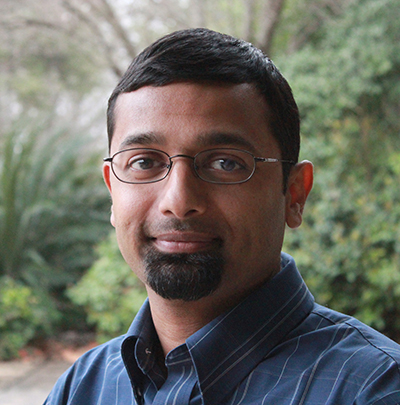 Dr. Joseph Johnson ’03 knows a thing or two personally about overcoming hearing issues.
Dr. Joseph Johnson ’03 knows a thing or two personally about overcoming hearing issues.
A general dentist in Killeen, Texas, Johnson has gone through dental school – and everything else in life – with no hearing in his left ear and limited hearing via a device in his right.
“American Sign Language is my first language,” he says. “English is my second. I didn’t speak until I was 5 years old.”
These days Johnson communicates most often through speech, amplified hearing and lip reading. He points out the occasional difficulty understanding a patient with a thick accent or talking with a colleague through a mask. When communication is one-on-one and doesn’t involve multiple people speaking at once, things usually go smoothly.
Johnson does use sign language to communicate with two deaf patients.
“Signing takes longer, so I book a longer appointment to allow time for communication and answering any questions or concerns before and after a procedure,” he says. “It can be hard to translate dental terminology via signing.
“But communicating with pen and paper is frustrating for both sides.”
As a dental student Johnson had to get strategic to ensure he didn’t miss instruction. In lectures, he would ask to sit on the right side of the front row to gain best positioning for hearing. He also used an FM loop device – a radio of sorts featuring a dedicated channel – with a transmitter located by the professor’s microphone and the receiver worn on a loop around Johnson’s neck.
He is quick to acknowledge classmates for supporting him in dental school.
“When I got to TAMBCD I didn’t know anybody, and I spread the word that I was looking for a roommate. Simon Kolath was a year ahead of me, and it turns out he needed a roommate, too. We had no idea at the time, but my roommate turned out to be my ‘big brother,’” Johnson says.
As a big brother – the former term for upper-class mentor – Kolath answered questions, addressed concerns, offered study help and practical assistance. Another classmate, Dr. Todd Baumann ’02, also provided academic support.
“It took me double the study time; even with the loop unit it was hard to grasp all the information at once, so I wrote down key words and went back and reviewed,” Johnson says. “Sometimes I would ask my big brother or follow up with the professor the next day for clarification. It was like studying for a test every day.”
Group study sessions were not an option, even for a lip reader, says Johnson. “Several people talking at once was confusing, so I didn’t participate in group discussions.”
Johnson credits his parents and brother – and a special elementary teacher – for fostering his success long before dental school days. His says his motivation to give back to the community as a health care provider came from gratitude for all the people who helped him along the way.
“When we moved from Washington state to Lake Jackson, Texas, I was placed in the special ed class because of my hearing impairment,” Johnson says. “My teacher, Karen Moore, mainstreamed me to a regular class by the third grade, continuing to help me outside the classroom and tutoring in language over the summer.”
By the time he reached Texas Lutheran University in Seguin, Texas, Johnson declared premed biology as his major and was thinking of becoming a physician.
“Dentistry never entered my mind until my adviser told me about an internship available at Baylor College of Dentistry over the summer,” he says. “I decided to give it a try even though they only had spots for 12 people. I was accepted and was appreciative that I got in. I quickly became interested in the dental field and was excited about this new career choice.”
Johnson started shadowing a dentist, Dr. George Walker ’74, in Seguin. The two talked about the rigors of dental school and the amount of studying it required. Johnson was not deterred.
“That made me say, ‘I’m up for the challenge. I overcome challenges by extra effort.’”
Motivated to increase access
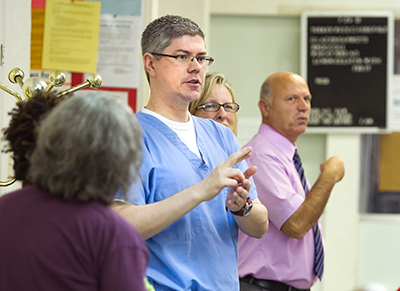 Knowing that deaf patients often experience roadblocks to achieving ordinary tasks, Cramer is committed to improving one aspect of health for deaf patients in his small corner of the world.
Knowing that deaf patients often experience roadblocks to achieving ordinary tasks, Cramer is committed to improving one aspect of health for deaf patients in his small corner of the world.
“It can be intimidating for them to go to a dental appointment and not be able to communicate with the dentist or understand what the dentist is saying to the assistant,” Cramer says. “Many have not seen a dentist in a long time.
“As long as there are interpreters to support the process, we can support deaf patients. That help is as good as gold for what it means for the patients.”
With immediate and extended family in the Dallas-Fort Worth area, Cramer has plenty of folks lending encouragement and cheering his progress. His twin 8-year-old girls know only that their dad has been in dental school as long as they can remember. They keep asking, “Daddy, are you a dentist yet?”
Not yet. But soon. And in years to come, Cramer fully intends to continue serving this special population with compassion.
“It is a groundbreaking experience to serve the deaf community,” he says.